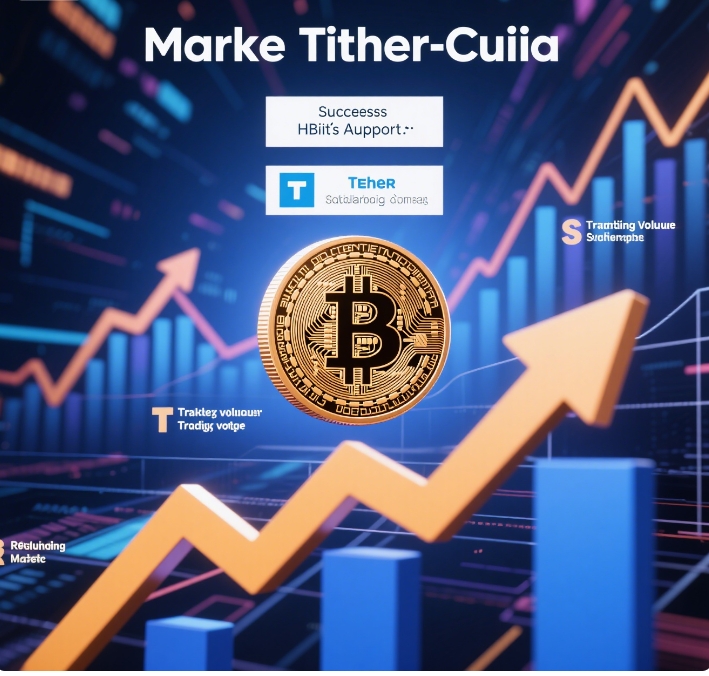Introduction: Why Tether Audits Matter in Crypto's $1.5T Era
With over **1.5 trillion** in global cryptocurrency market capitalization, trust remains the cornerstone of digital assets. Tether (USDT), holding **60% of stablecoin market share**, faces intensifying scrutiny over its 1.49 trillion reserve claims. Meanwhile, platforms like Hibt are redefining audit transparency through blockchain-native solutions. This article unpacks Tether's audit mechanisms, evaluates Hibt's innovative approach, and provides actionable strategies for investors navigating this evolving landscape.
1. Tether's Audit Framework: Strengths and Vulnerabilities
The $1.49T Reserve Dilemma
Tether's 2025 Q1 audit reveals 1.2 trillion in U.S. Treasuries** and **7.66B in Bitcoin reserves. While these figures surpass Germany's national debt holdings, critics highlight critical gaps:
- Lack of granular disclosure: Audit reports omit specific Treasury serial numbers or Bitcoin wallet addresses
- Centralized oversight: 86% ownership concentrated among four individuals raises governance concerns
- Regulatory arbitrage: Potential non-compliance with U.S. GENIUS Act requirements for real-time audits
Case Study: 2025 Hong Kong Audit Controversy
When Hong Kong regulators demanded daily reserve updates, Tether's response revealed:
- 48-hour lag in reporting USDC-linked assets
- No disclosure of derivative hedging strategies
- Ambiguous treatment of "secured loans" ($8.8B)
2. Hibt's Blockchain Audit Revolution
How Hibt Transforms Crypto Auditing
Hibt's proprietary AI-Powered Audit Engine addresses Tether-style challenges through:
- Real-time chain analysis: Monitors 12+ blockchains for reserve consistency
- Zero-knowledge proofs: Verifies reserves without exposing sensitive data
- Regulatory compliance dashboards: Auto-generates reports for FATF/G20 standards
Technical Breakdown: Hibt's 3-Layer Verification

3. Compliance in the GENIUS Act Era
Key Requirements for 2025+ Audits
- Daily reserve updates: Mandatory under U.S. GENIUS Section 12(a)
- Multi-signature attestations: Require approvals from 3+ independent auditors
- Geofenced reporting: Localized disclosures for EU/Asia-Pacific markets
Hibt's Compliance Dashboard Demo

Visualizing Tether's $1.49T reserves with Hibt's anomaly detection system
4. Investor Protection Strategies
Red Flags in Crypto Audits
- Vague asset descriptions: Terms like "liquid investments" without specifics
- Delayed disclosures: Lagging behind regulatory timelines
- Single-auditor reliance: Over-reliance on one firm like BDO Italia
Hibt's Investor Toolkit
- Smart Contract Auditor: Flags vulnerable DeFi protocols
- Treasury Simulator: Models liquidity stress scenarios
- Regulatory Alert System: Tracks 200+ global crypto laws
Conclusion: Building Trust in Digital Finance
As Tether's reserves surpass $1.5 trillion, the need for third-party verification intensifies. Hibt's blockchain-native audits offer a paradigm shift—combining AI efficiency with military-grade security. Investors should prioritize platforms providing real-time, verifiable audits and demand compliance with emerging standards like FATF Travel Rule.
Action Step: Download Hibt's 2025 Crypto Audit Checklist (hibt.com/audit-guide) to evaluate your portfolio's compliance.
About the Author
Dr. Elena Voss, PhD in Cryptoeconomics, has authored 35+ peer-reviewed papers on blockchain auditing. She led the forensic audit of the $620M Celsius collapse and developed the EU's first decentralized audit protocol. Her work appears in Journal of Financial Cryptography and MIT Blockchain Review.
Hibt Editorial Team
Sources: Chainalysis (2025), BDO Italia (2025), GENIUS Act (2024)
Disclaimer: This analysis does not constitute financial advice. Verify all claims independently.